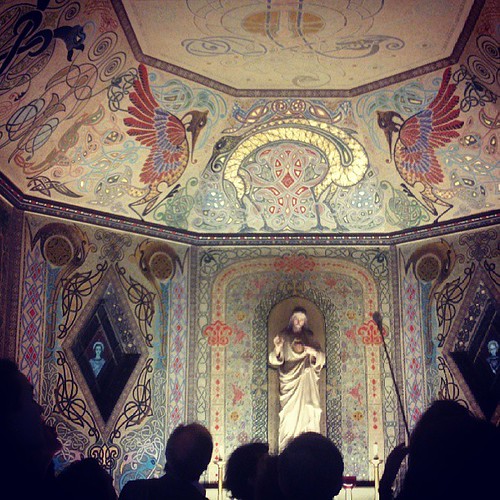
Vistors at the Oratory of the Sacred Heart, Dun Laoghaire, Co. Dublin
Open House Dublin, held annually in October, is Ireland's largest Architectural festival, running annually, part of the Architectural Festival Family worldwide which includes Chicago, London, Lisbon, Helsinki and Dublin. Last October, I volunteered in the North Georgian Quarter of Dublin and I wrote about my experiences here.
Overall participating in this weekend has been a rewarding experience. Over the three days, 100 buildings of historical, social and architectural interest open their doors to the public. This festival facilitates special tours by hundreds of professionals and enthusiasts to interested members of the public. Being a volunteer you get the opportunity to experience these special buildings, share them with the public and meet other interesting volunteers besides.
Rathmines Library

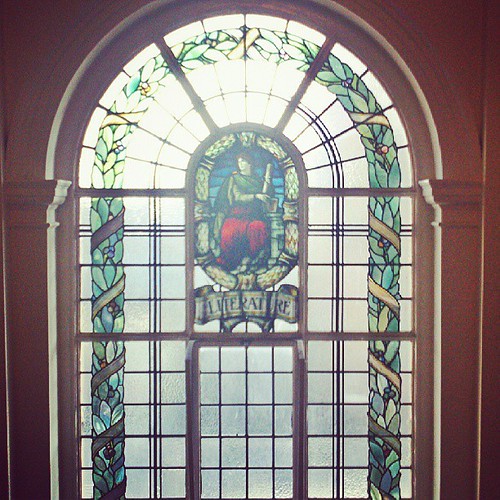
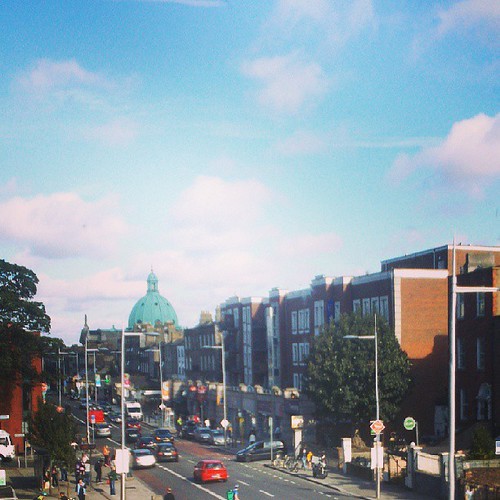
Top: Rathmines library celebrates its centenary this year
Middle: Morris & Co. 1913 stained glass window, with an allegory for literature.
Bottom: View of Rathmines towards Portobello from a library window.
On Saturday, I was based in Rathmines Library. This public library is the second busiest in Ireland, and was full of life all afternoon. It was cheering to see all the young families and various members of the community come through the doors. The stained glass window to the front of the building, was commissioned from William Morris & Co. in 1913, the simplicity of design is certainly in the Morris style. A classical figure is seated in the centre, as an allegory for literature. Rathmines Library is one of libraries funded by the Scottish-born philanthropist Andrew Carnegie. Carnegie's fortune is a true rags to riches story, coming from his successful steel business in the USA. Upon the sale of his business for $480m, he dedicated the rest of his life to philanthropic activities. He built the famous Carnegie Hall, and funded the establishment of public 'Carnegie libraries' throughout the English speaking world.
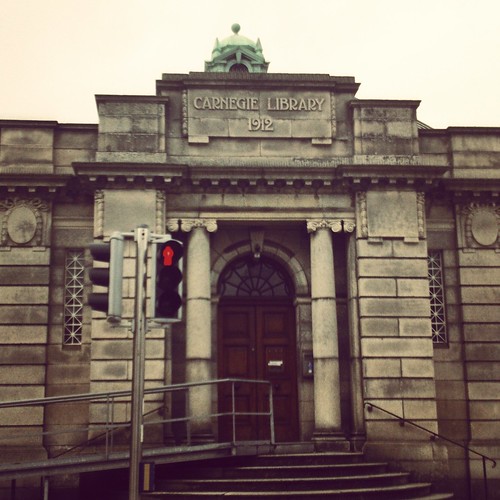
By great coincidence, or not, when I ventured out to Dun Laoghaire on Sunday, I discovered they too had a Carnegie Library!
Oratory of the Sacred Heart, Dun Laoghaire
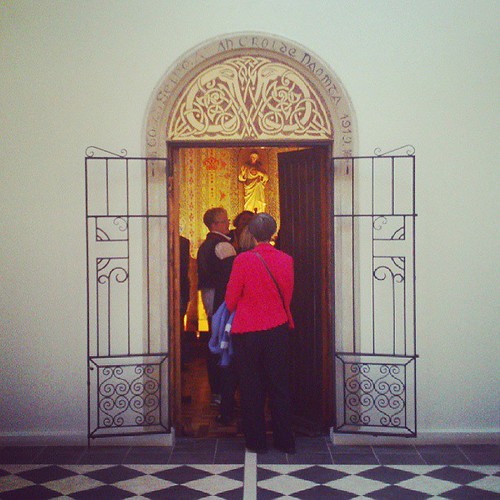
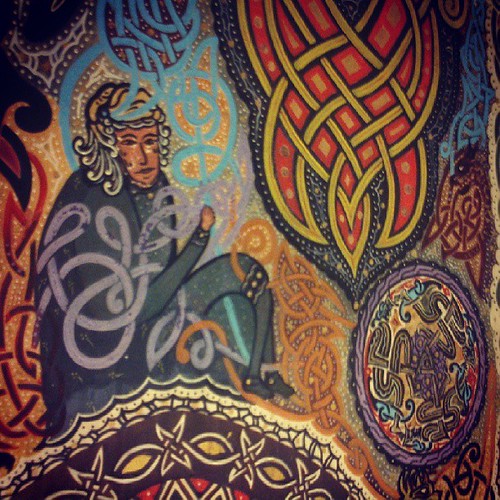
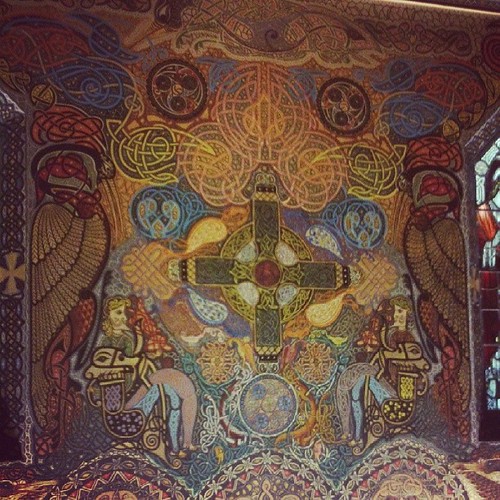
Top: Entrance to the Oratory of the Sacred Heart (c. 1919)
Middle: Mural detail of a Celtic figure
Bottom: Painted mural commemorating the 1932 Eucharistic Congress, which had taken place in Dublin
The journey from Dublin city centre takes about 50 minutes on a 46a bus, or 20 minutes on the DART. I was tied for time, as I had to get the last train back to Sligo on Sunday, but it was a beautiful mild afternoon, so I didn't mind the journey or the destination at all!
Sister Concepta Lynch (1874 - 1939, born Lily Lynch) learnt the Lynch Method of Celtic Art from her father, Thomas Joseph Lynch, a renowned Dublin artist who specialised in Celtic illuminations. After her father's death when she was 16, she ran his studio on Grafton street for a further six years, until taking her vows and becoming a nun in the enclosed order at the Dominican convent, Dun Laoghaire.
At the end of World War I, a town in Northern France donated a statue of the Sacred Heart to the parish of Kingstown (now Dun Laoghaire) to commemorate the many local Irishmen who had fought and died in Flanders during World War One. In response, in 1919, an oratory was commissioned by the Dominican sisters. Upon its completion, Sr Concepta was asked to decorate the altar, after witnessing the style in which she had executed it, her Mother Superior asked her to decorate the entire oratory, and she did so in the Celtic Revival style she had learnt from her father. She worked on the oratory for sixteen years (1920-1936), only giving up when she was in ill health towards the end of her life. As you can see from the pictures its not your conventional war/peace memorial!
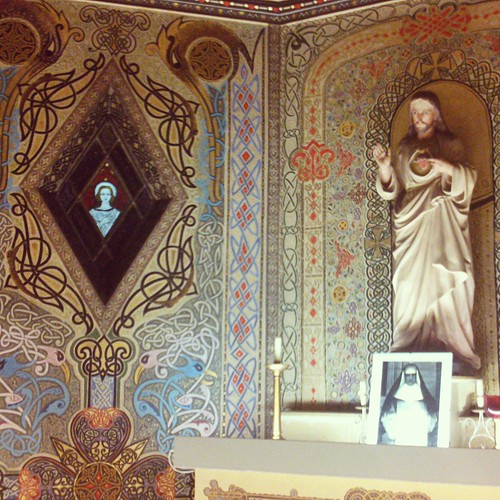
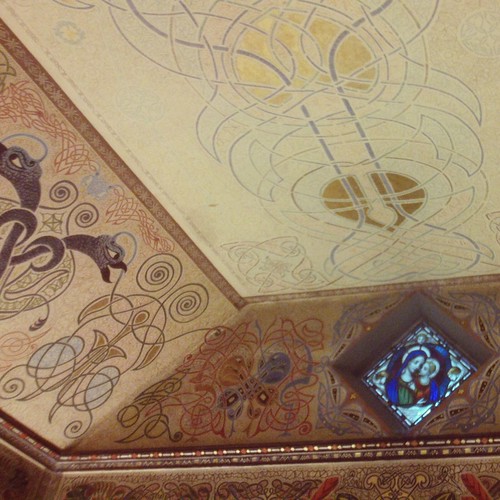
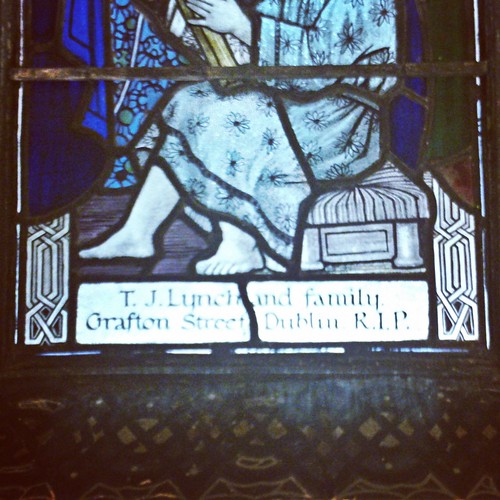
Top: The sacred heart statue was brought over from France after WWI, see the Harry Clarke & Co. stained glass in the background
Middle: The ceiling remains unfinished, after Lynch's death in 1939, Harry Clarke & Co. stained glass in the background
Bottom: The Harry Clarke & Co. stained glass was commissioned by Lynch, she had it inscribed with the names of family members who had helped fund and inspire her work in the oratory
The design of the oratory takes its inspiration from Celtic manuscripts, including the Book of Kells, as well as Byzantine methods of decoration. Celtic illuminations are notable for their zoomorphic designs (designs taking animal forms), figures, wonderfully curved designs and repeating patterns. This all encompassing design took Lynch sixteen years to complete between (1920-36), she became ill and couldn't complete the ceiling of the oratory. However, this does not detract from the design, as you can clearly see her design process, where she sketched out the designs in graphite pencil, using templates for repeating designs. Unbelievably the oratory is painted totally in household paint. As she was in an enclosed order she could not purchase the paints herself from a specialist art shop, so she would send her students with a list of her desired colours to the local shop to buy paints.
It is a shame that Lynch isn't more recognised in the Irish art canon. This is possibly due to a number of inter-related factors, significantly, she was in an enclosed order so she was not part of the artistic social scene in Dublin. The oratory itself was in a fixed location on the grounds of a convent in a coastal village outside Dublin, so its not like her life's work could be exhibited to the greater public.
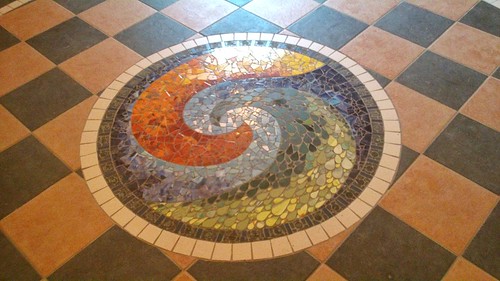
The modern building, or 'shell' that now surrounds the oratory was constructed in the 1990s in order to protect the small oratory. The entrance area has this beautiful mosaic set in the centre, by the artist Laura O'Hagan, who designed it in response to the Celtic Revival decoration of the oratory.
--
I apologise for the quality of my photos, it wasn't until I was on a train bound for Dublin that I realised I had forgotten my camera! Its difficult to source photos of the Oratory online, but I found some high resolution pictures of the oratory here on the Militaria Archive.
Rathmines library celebrates their cententary this year, and are hosting a number of fascinating (and free!) talks and events throughout October and November. View the full series of events on their site here.
Read more:
'The Gospel of Wealth' by Andrew Carnegie
Sister Concepta Lynch and the Lynch method of Celtic Art 1874 - 1939
View more high resolution pictures of the oratory here on the Militaria Archive

No comments:
Post a Comment